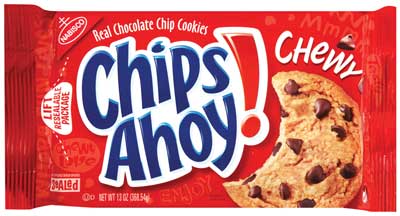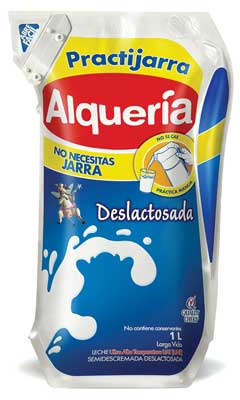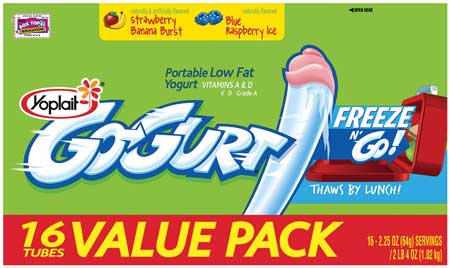Decreasing Consumer-Derived Food Waste
PACKAGING
Consumer-derived food waste accounts for 35% of food waste, representing an economic loss of $162 billion in the United States. While consumer-derived food waste predominantly occurs in developed countries, increased urbanization has resulted in a comparable level of consumer-derived food waste in emerging economies. For example, the consumer-derived food waste in industrialized Asia (46%) is approaching that of Europe (52%) and North America (61%).
Food waste at the consumer level results in the highest losses of resources since the loss occurs at the end of the supply chain. Resources lost include seed, arable land, labor, processing, packaging, and transportation. Packaging is a viable solution. Packaging that extends shelf life has focused predominantly on shelf life from packing to consumers and less on extending shelf life once food has been purchased. Two packaging solutions, resealable packaging and packaging that reduces cross-contamination, are critical to decreasing consumer-derived food waste.
Resealable Packaging
Resealable packaging inhibits lipid oxidation, moisture loss/gain, and microbial growth by limiting oxygen, water vapor, and microbial contact while retaining food flavor and aroma. The ability to reseal packages is desired by consumers who buy food in bulk and foods that are used infrequently and need to remain fresh. Resealable packaging has evolved from the initial patent activity in the 1950s. Nowadays, reseal innovations essentially take two approaches to extend product shelf life after opening: The first approach integrates reseal features into film to minimize modifications onsite at food packing facilities; the second approach adds a reseal feature onsite at food packing facilities.
Consumer-derived food waste can be reduced by incorporating a reseal without adding or significantly modifying onsite equipment. This first approach integrates reseal features into film stock or uses modified polymers to incorporate a reseal feature. The advantage of this integrated approach to resealing is that set-up time and lost production are negligible at food packing facilities because standard filling machines (no extra capital) are used or the product is filled through premade pouches.
• Adding reseal to film stock. Innoflex Inc., Alpharetta, Ga. (innoflexincorporated.com), and Velteko, Vlasim, Czech Republic (velteko.com), have patented processes for attaching interlocking reclosable features to film stock and stand-up pouches. Innoflex has licensing agreements with more than 30 film converters supplying diverse areas within the food industry, particularly the fruits and vegetables area, where 28% of food waste is derived by consumers. Innoflex’s Inno-Lok is commonly used in packaging for produce and snack foods such as Harvest Snaps Snapea Crisps. And Innoflex’s Pour & Lok interlocking zipper is pre-applied to a side-gusseted pouch for a consumer-friendly wide opening. Velteko’s Tin Tie, Cross Tie, and Roll Tie are applied before pouches are filled and offer consumers obvious means of reclosing. Tea, coffee, and other high value foods are frequently resealed with Velteko systems.
• Adding reseal via low-tack adhesives. Reseal is also integrated into packaging before being shipped to packing facilities by using the polymer innovation of low-tack adhesive layers. Low-tack adhesives reseal packages without exact alignment of the two sides. This rapid resealing appeals to consumers with varied dexterity. Low-tack adhesive layers are in use by a host of packaging suppliers. The horizontal form-fill-seal club store package for BelGioioso cheeses allows consumers to reseal the package 20 times and keep half of the product unopened using two separate resealable compartments with Smart Tack EZ Peel Reseal low-tack technology by Bemis Co., Oshkosh, Wis. (bemis.com). In a similar manner, Seal Strip by Sealstrip Corp., Gilbertsville, Pa. (sealstrip.com), and Spear Seal by Constantia Flexibles, Vienna, Austria (cflex.com), employ an inner adhesive layer and release coating to enable resealing without exact alignment of the two sealing sides. Resealing is also simplified by an acrylic tape applied to the packaging line before filling, using Peel&Seal by Sealstrip Corp. and EasyPack by Amcor, Melbourne, Australia (amcor.com). Rigid packaging can be resealed with low-tack adhesives when on flexible lid stock. In particular, OptiFlex Reseal roll stock by Ampac, Cincinnati, Ohio (ampaconline.com), coats biaxially oriented polypropylene with polyvinylidene chloride and a resealable adhesive for a 2 mil clear film for rigid produce applications. Low-tack adhesive layers offer an intuitive solution to resealing without onsite production modification.
 • Adding reseal with design innovation. Design innovations offer an integrated reseal approach with onsite equipment. Friction fit seals on injection-molded and thermo-formed rigid containers have been refined to allow for ease of opening and reclosing of meat, snack, and spread packaging. While meat waste accounts for only 12% of all consumer-derived food waste, its loss has a higher impact due to its resource-intensive nature and product value. To address this, Oscar Mayer Deli Fresh, Carving Board, and Selects pre-sliced deli meats provide a reclosable feature using a friction fit between the lid and package base. Lloyd’s Barbeque Tubs offer more vertical refrigerator storage that reduces spoilage by encouraging more frequent use as well as an audible reclosable tub. Reclosable features on oval thermo-formed and injection-molded spread tubs are achieved by fine-tuning the fit between the base and lid to allow for ease of opening and reclosing that minimizes oxidation and moisture loss. Ameristar 2014 recipient Clear Lam Inc., Elk Grove Village, Ill. (clearlam.com), incorporated its peel and reseal tamper-evident hinged lidding on its PrimaPak for a reclosable package for Fisher Nuts. Oxidation of nuts with high unsaturated fat content is reduced with the touch of a peel-and-reseal reclose feature. Innovations in labeling have created resealability for horizontal form-fill seal machines that commonly package products in need of moisture, flavor, aroma, and oxygen control, such as snack foods. Flexi and Flexi-Free by Ampac, SmartSeal by Sonoco, Hartsville, S.C. (sonoco.com), and Reseal-it by Macfarlane Labels, East Ayrshire, Scotland (macfarlanelabels.com), and PrintPack, Atlanta, Ga. (printpack.com), all use a label concept for rapid reseal of a wide opening on a flat package surface. Material is removed from the film and the label is placed over the opening during the converting operation. A 2 mil-oriented polypropylene was used for Sonoco’s SmartSeal label on Chips Ahoy.
• Adding reseal with design innovation. Design innovations offer an integrated reseal approach with onsite equipment. Friction fit seals on injection-molded and thermo-formed rigid containers have been refined to allow for ease of opening and reclosing of meat, snack, and spread packaging. While meat waste accounts for only 12% of all consumer-derived food waste, its loss has a higher impact due to its resource-intensive nature and product value. To address this, Oscar Mayer Deli Fresh, Carving Board, and Selects pre-sliced deli meats provide a reclosable feature using a friction fit between the lid and package base. Lloyd’s Barbeque Tubs offer more vertical refrigerator storage that reduces spoilage by encouraging more frequent use as well as an audible reclosable tub. Reclosable features on oval thermo-formed and injection-molded spread tubs are achieved by fine-tuning the fit between the base and lid to allow for ease of opening and reclosing that minimizes oxidation and moisture loss. Ameristar 2014 recipient Clear Lam Inc., Elk Grove Village, Ill. (clearlam.com), incorporated its peel and reseal tamper-evident hinged lidding on its PrimaPak for a reclosable package for Fisher Nuts. Oxidation of nuts with high unsaturated fat content is reduced with the touch of a peel-and-reseal reclose feature. Innovations in labeling have created resealability for horizontal form-fill seal machines that commonly package products in need of moisture, flavor, aroma, and oxygen control, such as snack foods. Flexi and Flexi-Free by Ampac, SmartSeal by Sonoco, Hartsville, S.C. (sonoco.com), and Reseal-it by Macfarlane Labels, East Ayrshire, Scotland (macfarlanelabels.com), and PrintPack, Atlanta, Ga. (printpack.com), all use a label concept for rapid reseal of a wide opening on a flat package surface. Material is removed from the film and the label is placed over the opening during the converting operation. A 2 mil-oriented polypropylene was used for Sonoco’s SmartSeal label on Chips Ahoy.
The second approach modifies existing packaging machinery onsite at food manufacturing facilities to incorporate a reseal feature that decreases consumer-derived food waste. A diligent focus on maintaining production efficiencies while adding a reseal feature has reduced the impact on line speeds that plagued the required production modifications in the early 1990s. Many companies have added a reseal feature to existing equipment. Technologies for applying reseal onsite (with some having the option of applying off-site) are interlocking zippers, micro-hooks, and audible reseal.
--- PAGE BREAK ---
• Resealable interlocking zippers. Presto Packaging Solutions, Appleton, Wis. (prestopkgs.com), and Zip-Pak, Manteno, Ill. (zippak.com), rely on interlocking zippers for resealing. These more traditional zippers are featured in brands such as Jennie-O Turkey Bacon, Twizzlers, Jolly Rancher Bites, and MOM cereals.
• Resealable micro-hooks. Resealing without the need for two-zipper alignment requires less dexterity and increases the likelihood of attaining an effective reseal to reduce food waste. Easy Lock by Aplix, Le Cellier, France (aplix.com), and Press-Lok by Velcro USA, Manchester, N.H. (velcro.com), use self-mating polyethylene micro-hooks that do not require exact alignment for reseal. AATU pet food and Special K Muesli use the Aplix Easy-Lock system while Organic Girl Three Hearts Romaine stand-up pouch (2015 FPA Packaging Excellence award winner) employs Velcro USA’s Press-Lok.
 • Audible reseal. Reseal features added onsite also address consumers’ need for audible and tactile clues that resealing is complete. Notably, Presto Packaging’s child-resistant Child-Guard addresses consumer needs for security. An audible reclose for pouches containing liquids is critical for consumers to rapidly know the package is resealed. This is especially important for milk, which represents 17% of consumer-derived food waste. SnapQuick by Ecolean, Helsingborg, Sweden (ecolean.com), is adhered with a heat-activated adhesive to premade pouches before aseptic filling of packages of Alquería milk. SnapQuick is made of two hinged bands of polyethylene terephthalate stamped with opposing negative and positive components that audibly snap close.
• Audible reseal. Reseal features added onsite also address consumers’ need for audible and tactile clues that resealing is complete. Notably, Presto Packaging’s child-resistant Child-Guard addresses consumer needs for security. An audible reclose for pouches containing liquids is critical for consumers to rapidly know the package is resealed. This is especially important for milk, which represents 17% of consumer-derived food waste. SnapQuick by Ecolean, Helsingborg, Sweden (ecolean.com), is adhered with a heat-activated adhesive to premade pouches before aseptic filling of packages of Alquería milk. SnapQuick is made of two hinged bands of polyethylene terephthalate stamped with opposing negative and positive components that audibly snap close.
Effective resealable packaging is essential to extend product shelf life. For both off-site and onsite reseal options, additional material that allows space for opening and reclosing is often needed. And a modified package structure with less elongation to avoid inhibiting opening and reclosing is often required. This additional material and material modification is factored into the cost of resealable package options and represents a substantial cost to brand owners. The expense is offset by the increased shelf life, heightened brand image, and reduction in consumer-derived food waste that resealing offers.
Reducing Cross-Contamination to Increase Shelf Life
Cross-contamination that results in food waste is a complex issue. Food is contaminated when it is exposed to a contaminant and/or when a product exterior comes in contact with a consumable product during cutting and preparation. Cross-contamination results in outbreaks that pose public health risks, allergic reactions, and increased food waste. Of reported outbreaks, 48% of contamination was from restaurant or deli preparation and 21% came from contamination within consumers’ homes. Clearly foodservice packaging solutions are needed to reduce contamination. Consumers’ understanding of how to properly handle food varies, and in emerging economies where packaged foods are increasing in popularity, safe preparation of packaged food is even less understood. Packaging offers a convenient means to reduce cross-contamination.
 • Material property innovation to reduce cross-contamination. Dead-fold and easy-peel packaging materials as well as those that enable modified and controlled atmosphere packaging (MAP/CAP) combine to reduce cross-contamination. Dead-fold material properties of squeezable packaging for Yoplait Go-Gurt and Gerber’s Grabbers Squeezable Fruit eliminate suck-back and reduce contact with contaminants. Consumers often resort to tools (which can be a source of contamination) to open bottle seals. Reducing product contact with tools with easy-open inner seals is achieved with polymer and production modification. Material inner seal innovations from the 1990s such as the Top Tab by Selig, Naperville, Ill. (seligsealing.com), with a peelable tab encompassing half the seal area, require minimal production adjustments to enable a seal through tab. Appeel peelable sealant resin by DuPont, Wilmington, Del. (dupont.com), is an innovation indicative of how increased use of opening tabs and polymer blends and catalysts can control the amount of adhesion and reduce the amount of force consumers need to peel a seal without tools. Consumers are less apt to use tools when visible tabs on a peelable seal are available to open a package. Cutting food results in an increased risk of cross-contamination from cutting boards, water, tools, and handlers. Package material innovations enable MAP/CAP of precut produce and reduce cross-contamination by consumers. Maglio Produce’s Ready Ripe Precut watermelon (recipient of the 2015 United Fresh Innovation Award) eliminates the need for consumer cutting and adds eight days to the shelf life of cut watermelon.
• Material property innovation to reduce cross-contamination. Dead-fold and easy-peel packaging materials as well as those that enable modified and controlled atmosphere packaging (MAP/CAP) combine to reduce cross-contamination. Dead-fold material properties of squeezable packaging for Yoplait Go-Gurt and Gerber’s Grabbers Squeezable Fruit eliminate suck-back and reduce contact with contaminants. Consumers often resort to tools (which can be a source of contamination) to open bottle seals. Reducing product contact with tools with easy-open inner seals is achieved with polymer and production modification. Material inner seal innovations from the 1990s such as the Top Tab by Selig, Naperville, Ill. (seligsealing.com), with a peelable tab encompassing half the seal area, require minimal production adjustments to enable a seal through tab. Appeel peelable sealant resin by DuPont, Wilmington, Del. (dupont.com), is an innovation indicative of how increased use of opening tabs and polymer blends and catalysts can control the amount of adhesion and reduce the amount of force consumers need to peel a seal without tools. Consumers are less apt to use tools when visible tabs on a peelable seal are available to open a package. Cutting food results in an increased risk of cross-contamination from cutting boards, water, tools, and handlers. Package material innovations enable MAP/CAP of precut produce and reduce cross-contamination by consumers. Maglio Produce’s Ready Ripe Precut watermelon (recipient of the 2015 United Fresh Innovation Award) eliminates the need for consumer cutting and adds eight days to the shelf life of cut watermelon.
• Design innovations to reduce cross-contamination: Precut meal ingredients within rigid and flexible packaging reduce cross-contamination in the chilled and frozen meals categories. Precut ingredients for meals reduce food waste since meat, seafood, and produce is cut and proportioned for direct consumer use. Freshly prepared packaged meals for global consumers by companies such as Blue Apron, Hello Fresh, Plated, Luke’s Local, and Peach Dish offer precut packaged fresh ingredients that reduce contamination and spoilage, thereby minimizing food waste. Contamination risk is also reduced in foodservice with packaging solutions that enable precut ingredients and cooking within the package. MicVac, Mölndal, Sweden (micvac.com), provides a peelable vacuum seal to facilitate venting during the cooking of 30-day shelf life chilled meals. A dual lid stock solution by Conveni, Liessel, Netherlands (conveni.nl), keeps vegetables and meats in variable CO2 and O2 environments and allows cooking without opening the two-part package. Frozen vegetables and meals within steamable bags incorporate either channels from Excelsior Technologies, Flintshire, Wales (exceltechuk.com), or micro-perforations that allow steam to vent such as Sonoco’s Microvent, used for Taylor Farms Steam Cuisine.
Food waste at the consumer end of the supply chain results in the highest resource loss because the loss occurs after resources to grow, package, and distribute have been incurred. And resealable packaging and packaging that reduces cross-contamination have matured to reduce consumer-derived food waste.

Claire Koelsch Sand, PhD,
Contributing Editor, President,
Packaging Technology & Research
Adjunct Professor, Michigan State Univ.
[email protected]
